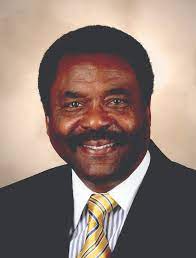We’ve all had days when discouragement, inadequacy, hurt, or fear want to plague our spirits. And we find our own weak efforts do little to ease the distress.
BUT!
Praise God he provides the antidote for every malady of the soul.
What follows is a list of ways he accomplishes that healing and binding [1]. I pray these declarations may be just the antidote to strengthen your inner being:
When we worry; he reassures.
When I worried about many things,
your assuring words soothed my soul.
—Psalm 94:19 GWT
When we stress, he soothes.
“Would you drown your cares? Then go, plunge yourself in the Godhead’s deepest sea; be lost in His immensity; and you shall come forth as from a couch of rest, refreshed and invigorated.
“I know nothing which can so comfort the soul; so calm the swelling billows of sorrow and grief; so speak peace to the winds of trial, as a devout musing upon the subject of the Godhead.”
—Charles Spurgeon
When we stagger; he steadies.
Cast your cares on the Lord and he will sustain you;
he will never let the righteous be shaken.
—Psalm 55:22 NIV
When we struggle; he strengthens.
“With the goodness of God to desire our highest welfare, the wisdom of God to plan it, and the power of God to achieve it, what do we lack?” — A. W. Tozer [2]
When we falter; he lifts up.
The Lord upholds all who fall
and lifts up all who are bowed down.
—Psalm 145:14
When we fail; he forgives.
“With [God], each day—each moment—is a clean slate” — Aliza Latta [3].
When we forget; he reminds.
For I, the Lord your God, hold your right hand;
it is I who say to you,
“Fear not, I am the one who helps you.”
—Isaiah 41:13 ESV
When we doubt; he affirms.
Dismantle doubts with declarations of truth from God’s Word, truths that remind us: his character is flawless, his actions are righteous, his power is unlimited, his love is unfailing, his faithfulness unending [4].
When we regret; he forgets.
I will forgive their sins and will
no longer remember their wrongs.”
—Hebrews 8:12 GNT
When we hunger; he fills.
Blessed [joyful, nourished by God’s goodness]
are those who hunger and thirst for righteousness
[those who actively seek right standing with God],
for they will be [completely] satisfied.
—Matthew 5:6 AMP
When we’re bent; he repairs.
“God is mercifully shaping our lives into what is useful and beautiful” — Eugene Peterson [5].
When we desire wrongly; he directs rightly.
For it is God who is working in you,
enabling you both to desire
and to work out his good purpose.
—Philippians 2:13 HCSB
When we’re uncertain; he guides.
“Happy are those who place their hands in that of the Great Guide. He will bring them all the way and when he has brought them home to glory and has opened their eyes to see the way by which he has led them, what a song of gratitude will they sing unto God! Lord, lead your poor blind child this day, for I know not my way” — Charles Spurgeon [6].
When we’re discouraged; he inspires
He would have us know: “Nothing under My control can ever be out of control. Everything you need I know about in every detail. Remember, I am able to supply, to guide, to start, to stop, to sustain, to change, to correct in My time and for My purposes” [7] .
Again and again he provides the antidote for every need of our souls.
Our part is simply to receive.
[1] “Binding” in Psalm 147:3 intimates holding together while an injury heals. God often allows time in combination with his antidotes to accomplish healing, fostering inner strength and perseverance in the process (James 1:2-4).
[2] Knowledge of the Holy, 70.
[3] www.incourage.com, 1-19-19
[4] Exodus 32:4; Psalm 145:17; Job 36:22-23; Psalm 117:1-2; 100:5
[5] Run with the Horses, 79.
[6] Faith’s Checkbook, March 23.
[7] Based on statements made by Chuck Swindoll in Intimacy with the Almighty, 73.
Photo credits: http://www.negativespace.com; http://www.dailyverses.net; http://www.heartlight.org; http://www.dailyverses.net; http://www.pexels.com; http://www.canva.com.




























































